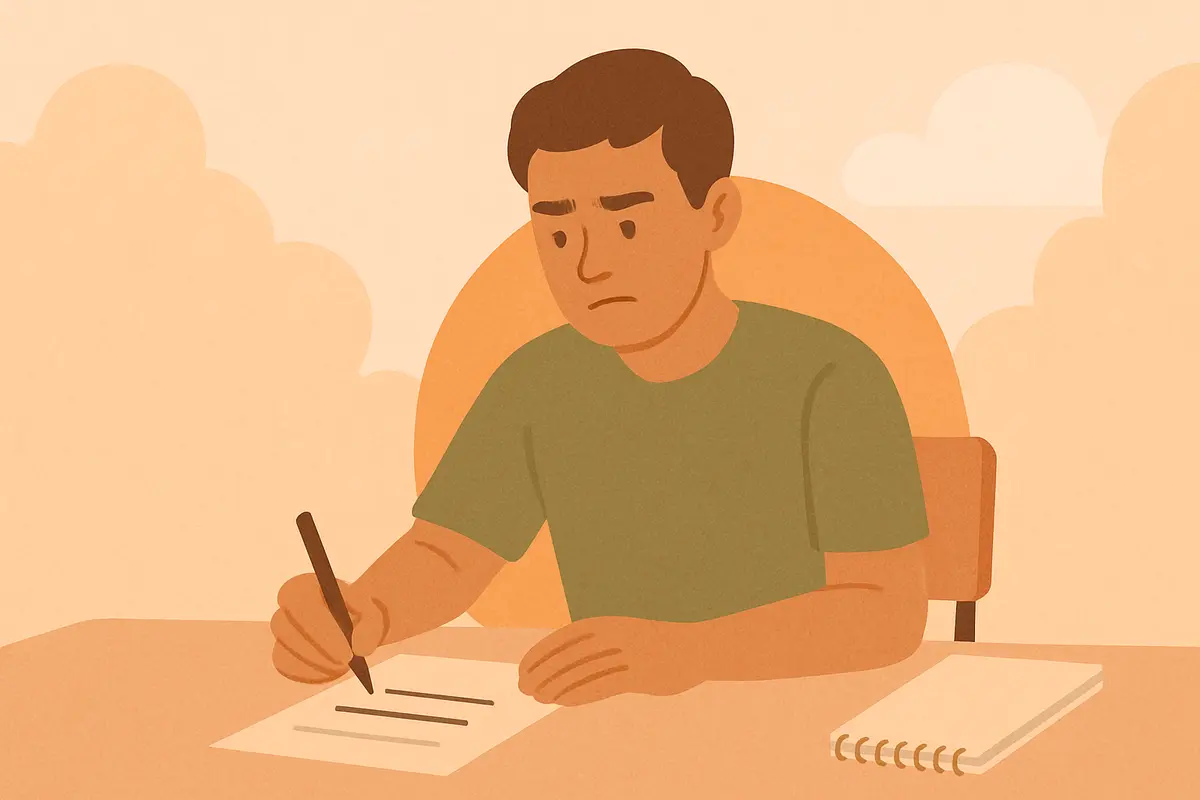Rewriting anxious self-statements involves identifying catastrophic thoughts and systematically replacing them with balanced, evidence-based alternatives through structured cognitive restructuring, reducing anxiety intensity within 5-10 minutes of practice.

Trapped in a mental loop of "I'm going to fail," "Everyone can see how anxious I am," or "Something terrible will happen"? These automatic negative thoughts create a vicious cycle where anxious predictions generate more anxiety, which generates more negative predictions. Your mind becomes a 24/7 news channel broadcasting worst-case scenarios, keeping your nervous system in constant high alert and making everyday situations feel threatening and overwhelming.
Rewriting anxious self-statements transforms destructive thought patterns into balanced, realistic perspectives through systematic cognitive restructuring that interrupts anxiety's spiral before it gains momentum. This evidence-based technique helps you catch distorted thinking, examine its accuracy, and replace mental catastrophes with grounded reality checks. Research demonstrates that cognitive restructuring significantly reduces anxiety symptoms and improves emotional regulation across various anxiety disorders.
Rewriting anxious self-statements operates through multiple interconnected cognitive and neurobiological mechanisms that fundamentally alter how the brain processes threatening information. The core effectiveness stems from cognitive restructuring theory, which demonstrates that changing thought patterns directly influences emotional and physiological responses to stressors.
The technique leverages neuroplasticity principles by creating new neural pathways associated with balanced thinking while weakening pathways linked to catastrophic interpretation. Brain imaging studies show that cognitive restructuring practices strengthen prefrontal cortex activity while reducing amygdala reactivity, leading to improved emotional regulation and reduced anxiety sensitivity.
One fundamental mechanism involves interrupting what psychologists call "cognitive distortions" - systematic errors in thinking that maintain anxiety and depression. Common distortions include catastrophizing, all-or-nothing thinking, mental filtering, and fortune telling. The structured rewriting process helps identify these distortions and develop more accurate, balanced perspectives.
The practice works through what researchers term "cognitive defusion" - creating psychological distance between yourself and your thoughts. Rather than accepting anxious thoughts as absolute truth, rewriting helps you observe thoughts as mental events that can be examined, questioned, and modified based on evidence and realistic assessment.
Research on attentional bias shows that anxiety creates selective attention to threatening information while filtering out neutral or positive details. Thought rewriting systematically redirects attention toward balanced information, gradually reducing the brain's threat-detection sensitivity and promoting more realistic threat assessment.
The writing component adds crucial elements of cognitive processing and memory consolidation. Studies indicate that writing about emotional experiences helps integrate difficult thoughts and feelings in ways that reduce their ongoing emotional impact. The structured rewriting format ensures this processing occurs with balance rather than rumination.
From a behavioral perspective, thought rewriting builds what psychologists call "cognitive flexibility" - the ability to adapt thinking patterns in response to changing circumstances. This mental agility reduces rigid, anxiety-provoking thought patterns while promoting adaptive responses to life challenges.
Additionally, the technique addresses what researchers call "meta-cognitive beliefs" - thoughts about thoughts. Many anxious individuals believe their worrying thoughts are accurate predictors of future events. Rewriting helps develop awareness that thoughts are mental events rather than factual prophecies, reducing the credibility and emotional impact of anxious predictions.
"My balanced thoughts don't feel emotionally true": This is extremely common initially, especially for people with long histories of anxious thinking. Continue practicing balanced thoughts even when they don't feel emotionally convincing yet. Emotional conviction often follows behavioral practice rather than preceding it.
"I can't think of any evidence against my anxious thoughts": When anxiety is intense, balanced thinking becomes difficult. Try asking "What would I tell a friend in this situation?" or "What would someone who cares about me say?" External perspectives often help access balanced viewpoints when self-focused thinking feels stuck.
"My anxious thoughts come back even after rewriting": Anxious thoughts often return initially because they're well-practiced mental habits. This doesn't mean the technique isn't working - continue challenging thoughts each time they arise. Repetition gradually weakens anxious thought patterns while strengthening balanced alternatives.
"I feel like I'm lying to myself with positive thinking": Focus on realistic rather than positive reframes. Balanced thoughts acknowledge legitimate concerns while correcting catastrophic distortions. Aim for thoughts that feel honest and evidence-based rather than artificially optimistic.
"Thought rewriting takes too much time during anxiety": Develop abbreviated versions for anxious moments - simple phrases like "Is this realistic?" or "What's most likely to happen?" Practice detailed rewriting during calm periods to build skills that can be accessed quickly during emotional intensity.
"I worry that questioning my anxious thoughts is dangerous": Many people believe anxious thinking provides protection by preparing for problems. Research shows that realistic thinking actually improves problem-solving and coping while reducing unnecessary emotional suffering. Balanced thoughts maintain appropriate caution without catastrophic distortion.